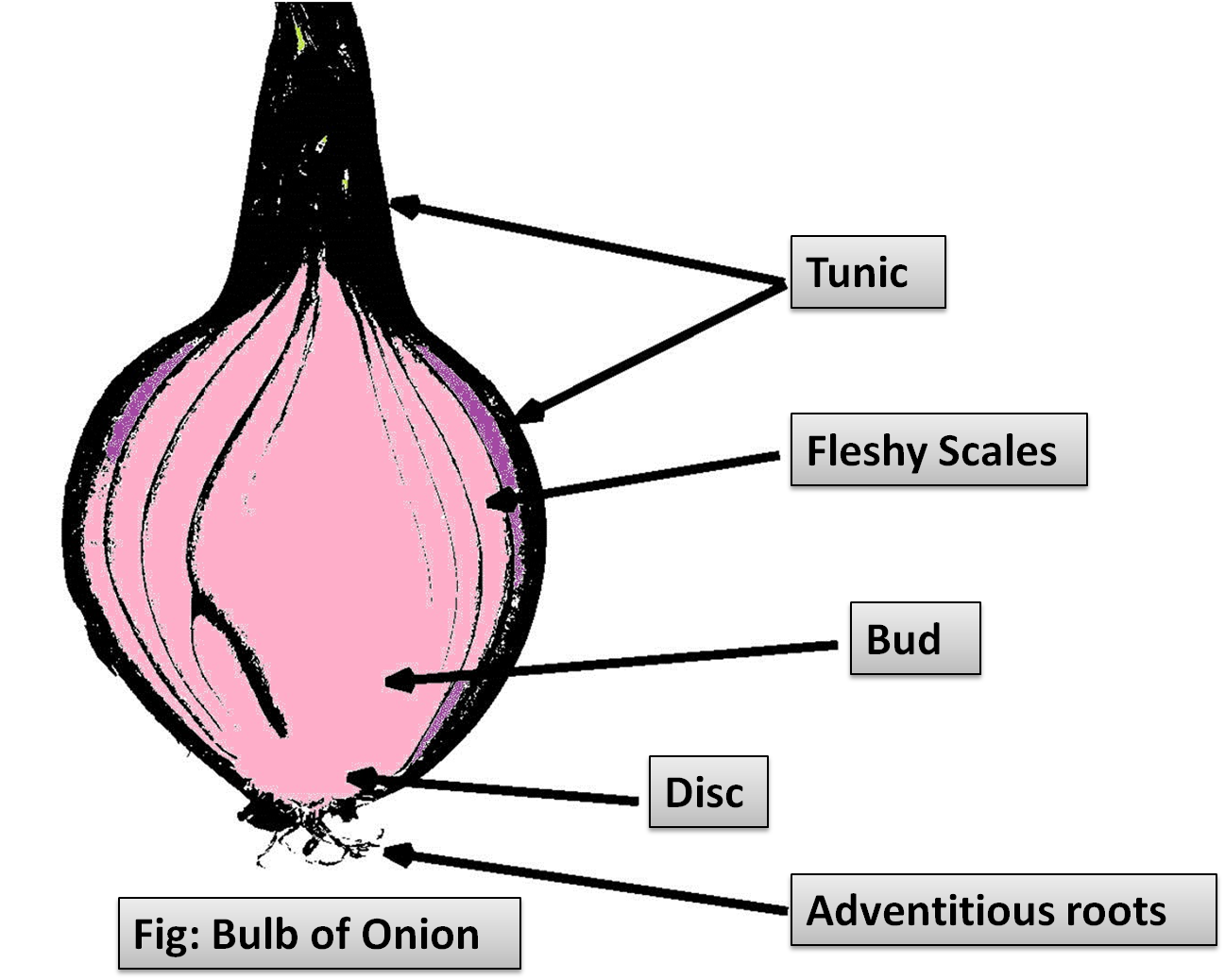
How does onion grow and describe this process?
Answer
493.8k+ views
Hint: A modified stem that is the resting stage of certain seed plants, particularly perennial monocotyledons. It consists of a relatively large, usually globe-shaped, underground bud with membranous or fleshy overlapping leaves arising from a short stem with fleshy leaves which in some species are actually expanded leaf bases function as food reserves.
Complete answer:
Onion plants can be grown from seeds or from bulbs. The process of growing onions from the bulb is known as vegetative propagation (a form of asexual reproduction in which the new plant grows from a fragment of the parent plant). The bulb grows by the growth of the radicle and flag leaves after which the true leaves emerge.

Additional information:
Stem modifications:
-Stolon: a shoot that grows down ground and it produces roots at its nodes; a runner.
-Tuber: a fleshy, thickened, underground stem of a plant, usually containing stored starch, as for instance a potato or arrowroot.
-Cladode: these are the green branches of limited growth which have taken up the functions of photosynthesis.
-Rhizome: a horizontal underground stem of some plants that send out roots and shoots from its nodes.
-Corm: a brief, vertical, swollen underground stem of a plant that is a storage organ to enable the plant to survive winter or other adverse conditions like drought.
-Bulb: the bulb-shaped root portion of a plant like a tulip, from which the rest of the plant could also be regrown.
-Tendril: a skinny, spirally-coiling stem that attaches a plant to its support.
-Thorn: a sharp, protective spine of a plant.
-Bulbil: a bulb-shaped bud within the place of a flower or in a leaf axil.

Note:
Vegetative propagation is the natural asexual reproduction of the plant which undergo reproduction with the help of various vegetative propagules. Asexual plant propagation methods produce new plants from vegetative parts of the original plant, like the leaves, stems and roots. These methods are generally mentioned as vegetative propagation. Many plants can reproduce this manner naturally, but vegetative propagation also can be artificially induced.
Complete answer:
Onion plants can be grown from seeds or from bulbs. The process of growing onions from the bulb is known as vegetative propagation (a form of asexual reproduction in which the new plant grows from a fragment of the parent plant). The bulb grows by the growth of the radicle and flag leaves after which the true leaves emerge.

Additional information:
Stem modifications:
-Stolon: a shoot that grows down ground and it produces roots at its nodes; a runner.
-Tuber: a fleshy, thickened, underground stem of a plant, usually containing stored starch, as for instance a potato or arrowroot.
-Cladode: these are the green branches of limited growth which have taken up the functions of photosynthesis.
-Rhizome: a horizontal underground stem of some plants that send out roots and shoots from its nodes.
-Corm: a brief, vertical, swollen underground stem of a plant that is a storage organ to enable the plant to survive winter or other adverse conditions like drought.
-Bulb: the bulb-shaped root portion of a plant like a tulip, from which the rest of the plant could also be regrown.
-Tendril: a skinny, spirally-coiling stem that attaches a plant to its support.
-Thorn: a sharp, protective spine of a plant.
-Bulbil: a bulb-shaped bud within the place of a flower or in a leaf axil.

Note:
Vegetative propagation is the natural asexual reproduction of the plant which undergo reproduction with the help of various vegetative propagules. Asexual plant propagation methods produce new plants from vegetative parts of the original plant, like the leaves, stems and roots. These methods are generally mentioned as vegetative propagation. Many plants can reproduce this manner naturally, but vegetative propagation also can be artificially induced.
Recently Updated Pages
The correct geometry and hybridization for XeF4 are class 11 chemistry CBSE

Water softening by Clarks process uses ACalcium bicarbonate class 11 chemistry CBSE

With reference to graphite and diamond which of the class 11 chemistry CBSE

A certain household has consumed 250 units of energy class 11 physics CBSE

The lightest metal known is A beryllium B lithium C class 11 chemistry CBSE

What is the formula mass of the iodine molecule class 11 chemistry CBSE

Trending doubts
State the laws of reflection of light

One Metric ton is equal to kg A 10000 B 1000 C 100 class 11 physics CBSE

Difference Between Prokaryotic Cells and Eukaryotic Cells

How do I convert ms to kmh Give an example class 11 physics CBSE

Describe the effects of the Second World War class 11 social science CBSE

Which of the following methods is suitable for preventing class 11 chemistry CBSE




